Winter backpacking is an exceptional pastime, and while similar to hiking trails during the warmer months, there is something a bit special about backpacking through a winter landscape. The air seems fresher, crisp, and with nothing but you and nature all around you, it becomes easy to hear your footfall on the soft snow beneath your feet as you walk. Backpacking during the colder months of the year allows you to experience the stillness and natural quiet of the wintry months.
[the_ad_placement id=”in-text-1-type-a”]Enjoying a wintry landscape is certainly a worthy experience, but backpacking in the snow and cold weather conditions requires careful planning. Preparing for your trip in advance ensures your comfort and safety. There are many considerations you face while getting ready for your trip. It makes no difference if the hike is one day or two or three days, there is quite a bit of pre-trip work preparation ahead.
Must have apparel
One important rule of thumb you must remember when you go backpacking in the winter months is that the weather can prove volatile, and change in a moment without any notice. You should also keep in mind that even if you have listened into a weather report for predictions about the weather, not even the weather announcer is always right. It is best if you prepare for possible dramatic weather changes than to get caught off guard without the extra apparel you need to keep warm.
Since you will be venturing outdoors when it is chilly, cold, or even frosty, it is easy to lose body heat quickly. As much as 90 percent of your body heat can escape from your head even though you can lose body heat from any exposed area. The heat from your body can also escape from the feet: This is why it is imperative that you layer your attire whenever you embark on a backpacking adventure in the winter months.
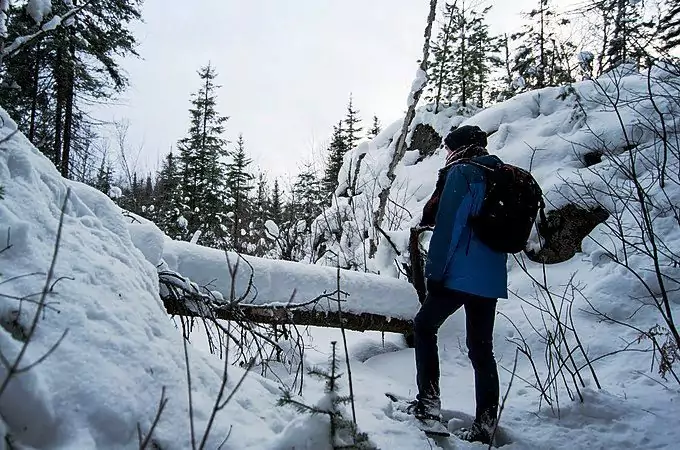
When establishing your winter backpacking gear list, you need to count the clothing you will wear and extra clothing. It is true you want to pack your backpack as light as possible, but extra clothing is a necessity you cannot do without. Since it is so cold outside and temperatures can drop to dangerous conditions quickly, you will need extra clothing to replace any of your clothing that gets wet during your travels. Having dry attire to change into can mean the difference between frostbite or hypothermia and remaining warm and safe.
The amount of extra clothing you will bring with you on your trip is dependent on several factors: trip duration, and the weather conditions, both current and projected. Some of the extra apparel you should bring with you consists of undergarments, socks, shirts, and pants.
Clothing features
The clothing you wear when backpacking and the extra attire you bring with you needs to have some specific features. Dressing appropriately for the weather conditions is essential. Not only do you want to stay warm and dry, you will want to make sure you have on hand any attire you need while you are on your backpacking excursion. There are four main attributes each item should have if it is really going to serve your needs:
- Breathability: To maintain maximum comfort, your garments should not be too tight, restrictive, and must be able to breathe to prevent excessive perspiration. Bear in mind, an investment in waterproof clothing provides you with attire that is not quite as breathable as clothing that is absent of waterproofing attributes.
- Water resistance/Water proofing: This feature can help you when you get in situations where you contact with water, like exposure to heavy wet snow or slushy areas. This type of clothing will require special care and you will need to follow the washing instructions to ensure that the waterproofing feature remains intact.
- Wicks away dampness: Your attire needs to keep any moisture or dampness away from your skin. When you perspire, it can cause your clothing to cling to you and it can remain damp from excessive sweat. Keeping your skin dry prevents chills that damp or wet clothing might trigger.
- Quick drying: In the event your clothing does get wet while you are outdoors, you will want attire that dries fast. It is easy to catch a chill when one or more of garments are either damp or wet. With some extra attire, you can swap out what you are wearing for drier garments, and give your clothing a chance to dry. Refrain from wearing clothes made of cotton materials.
Layering attire
When you are preparing your winter backpacking gear list you will be choosing attire to serve as one of three layers of attire you need for your excursion. The layers of clothing you need include the base, middle or outer layers. All three layers keep you warm from the extreme cold of the outdoors. Below is a table listing clothes that fit into each of the three layers of clothing you should have on your gear list.
| Layer | Description | Clothing |
| Base | To keep perspiration away from the skin and to keep you dry and warm: Acceptable fabrics include things like merino wool or synthetics. The purpose of this layer of attire is for the management of moisture.
If you double up on the base layer of clothing you will add an additional layer of warmth. |
Undergarments, underwear, boxers, briefs
Thermals: All of which are available in light, mid, and expedition weights Bras T-shirts
|
| Middle | The middle layer of clothing is for the purposes of insulating the body and retaining heat.
Recommended fabrics include microfleece, fleece, and expedition weight attire for snowy climes. Goose Down Most ideal for dry and extremely cold weather conditions (This material must remain dry to retain its insulation and warming properties).
|
Shirts – The appropriate fleece tops for the middle layer of clothing is also available in light, mid, and expedition weights.
pants Goose Down coats
|
| Shell | This layer is water resistant or water proof. It is sometimes breathable, but the breathability is limited due to the waterproofing features of the clothing.
You can also buy outerwear shells that are waterproof and breathable, but these will cost more than basic waterproof/water resistant outerwear. Recommended fabrics include laminates, and polyurethane coated fabrics. |
Mountaineer jackets
Windproof jackets Insulated shells |
For more information on the benefits of layers clothing, see our article on this topic.
Footwear
When you are out in the snowy, slushy, wet, damp, and potentially muddy and cold winter landscape, you will want to have top of the line boots on your feet. Keep in mind that just because a boot suggests it is waterproof it doesn’t necessarily mean that in the right conditions, and if accidently entirely submerged in water, that the boot will remain dry.
[the_ad_placement id=”in-text-2-type-a”]In such an instance, the boots can and will freeze and, if you have nothing else to wear, your feet will freeze as a result. This is why bringing extra clothing is imperative.
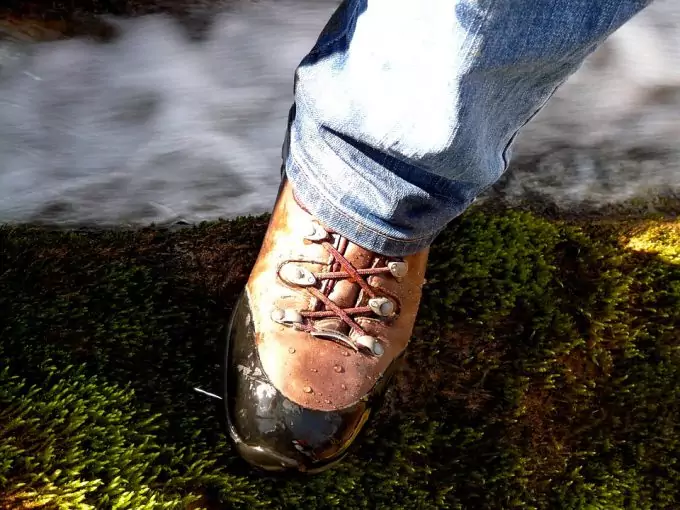
You can swap out your wet socks for dry ones as you dry your boots by a fire or as you don on an extra pair you’ve smartly stashed in your backpack.
Polarand 8 Waterproof Winter Boots for Women
Polarand boots for women feature an exceptional, high ankle, solid sole design. The boots are waterproof, and have a high cut silhouette for fantastic visual appeal, but it is with function that they really shine. Additional features include:
- A leather construction
- Rubber sole for solid support during your hikes
- M-Select Dry waterproof technologies
- Grade 3 Nylon sole for added durability
- Thinsulate insulating feature for an additional level of warmth at the toe cap
- Compatible with snowshoe straps
- The midsole made of EVA foam
Polarand 8 Waterproof Winter Boots for Men
The Polarand boots for men have the same attractive leather construction, but with a synthetic mix, and the sole is also made of synthetic materials. The boots feature an adjustable circumference, and the insole is removable. Additional features include:
- A durable rubber sole
- An air cushioned heel for shock absorption and additional stability
- ActiveHeat features contribute to a warmer interior
- 5 mm thick waterproof leather materials
- M-Select Treated for odor control
Outer coat
The outer coat or shell is something that keeps the body heat in while simultaneously protecting you from the elements:
| Coat | Description | Ideal Use |
| Insulated Outer Shell Coats | The outer shell coat has an insulated layer made of fleece or some alternative material. | Best in conditions where it is wet and cold outdoors.
Not the best coat in every situation where layering is recommended. |
| Soft Shell Coats | A coat made of fabric that breathes, many of which have fabric panels to offer the wearer more comfort during exercise or rigorous activities. | Best for cold and mild weather conditions. |
| Water resistant and Non-Breathable Waterproof Coat | The shell is made of polyurethane that has a nylon coating.
The coat is wind and waterproof or water resistant. |
Suitable for days when it is raining or when the wearer is engaged in light activity. A great choice for the angler or outdoor sportsman. |
| Breathable Waterproof Coat | The coat has laminated membranes that protect the exterior of the coat from water and wind. | This coat is more costly than most as it is great in a variety of weather conditions. |
When you are looking for an outer coat for women, Mountain Hardware makes the Ghost Whisper Down Jacket with a nylon exterior and Q.Shield 800 fill insulation. The coat features a low profile, attractive, exterior quilt pattern.
Additional features include:
- Award-winning jacket
- Ideal for Alpine Climbing
- Zips into a pocket for ease of storage
- Cuffs are Butter Jersey soft
- Easy to pack
- Super warm
- Available in some 25 colors
The same manufacturer makes the Kelvinator Down Jacket for men. The coat is simple to pack and compress, thanks to its innovative design with the stitch through quilting. The cuffs have elastic in them so they cling close to the body and keep out drafts or the wind.
https://youtu.be/HrZApE1D44k
Additional features include:
- Available in eight colors and three sizes.
- Retains maximum loft even when it gets wet
- Resistant to heat-stealing moisture due to the Q-Shield Down
- Standard fit
Desirable accessories
Your boots and coat are certainly important pieces of attire that you do not want to be without when you are backpacking during the winter months. A few accessories can also serve you well when you are outdoors in the snowy climbs. Some items you will definitely want on hand include:
Hat: Wearing a hat is essential to maintaining body warmth. As mentioned previously, much of your body heat can escape out of your head. To keep warm, a hat is a must. A hat can also serve to keep your ears warm, and if you have a seek mask or a baklava, you can keep your face warm and free from the sting of the cold winter air as well.
Gloves/Mittens/Hand Coverings: Gloves are better than mittens if you are looking to have some good hand controls and to be able to grip things with ease. Of course, you can always wear gloves underneath mittens, and use the mittens as a secondary covering for your fingers. In lei of gloves or mittens, hand warms are great accessories that serve as a fast way to warm up on a fridge day.
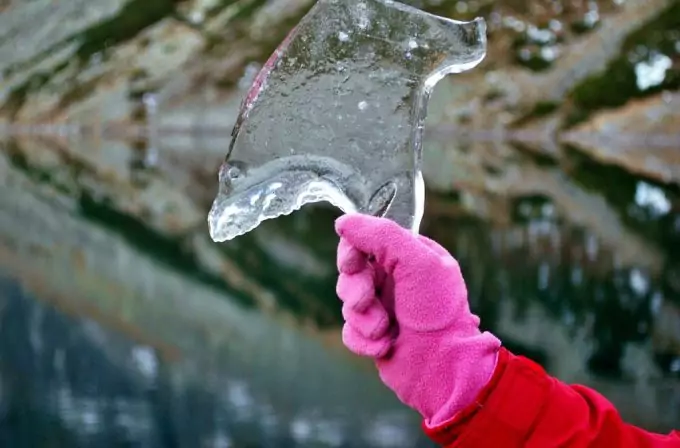
Unisex Gaiters: This is an ideal addition for men and women alike as they will help keep the feet and legs warm and dry when in deep snow. You can also protect your clothing from exposure to sand, mud, wind, and rain. BINGUO Essential Unisex Gaiters perfect for use when trimming grass, biking, climbing, hunting, fishing, or hiking through a snow-covered landscape. Additional features include:
- anti-tear fabric that is breathable and attractive.
- Snap fasteners and elastic bands for easy removal
- Zipper and Velcro features for ease of putting the gaiters on
Goggles: Getting some goggles can help keep your eyes protected from the wind and debris.
Socks: Extra socks are an absolute must in order to always guarantee you have dry, comfortable, warm feet.
Fundamental equipment
The later list of fundamental equipment is a mix of the classic and modern systems listing of essentials for outdoor adventurers. The lists were a product created by a Seattle-based organization called The Mountaineers and appear in the book “Mountaineering: The Freedom of the Hills.”

Image credit: manmadediy.com
Here are the first five essentials out of the ten listed:
- Navigation: When it comes to navigation, before you head out on any kind of winter backpacking hike make sure you have topography maps of the area. You should also invest in a compass. Even if you have a digital compass on your cell phone device, you should still invest in a physical compass. Doing so will ensure you have something that will direct you to due North, even if you don’t have a charge left on your mobile device. See our list of the top compass to serve as your guide.
Additionally, in terms of navigation, you need to leave a precise map of where you plan to go and how you plan to get there with a friend: This will allow a search party to have a good sense of where to start if something happens to you. - Insulation: This means that you should insulate your body with the proper attire and by wearing layers as mentioned earlier. Get warm clothing, wear layers, and get boots with insulation like Thinsulate® or boot liners.
- Sun protection: Protection from the sun is imperative, especially when you are out in the snow. The sun reflects off of the snowy service and makes sunburn in more likely. What’s more, UV light is damaging to the skin and the eyes. You will need chapstick, sunscreen with an SPF of 15 to 30, and you should reapply the sunscreen every two hours.
- Illumination: Flashlights, batteries, and lanterns will serve you well on your trip, especially if you leave before dawn, return at dusk, or get lost.
- First Aid Supplies: You should bring basic care items like bandages and antiseptic. If you have medications you must take, you can keep it with your first aid kit.
More essentials
Here is a breakdown of the remaining five essentials for the outdoor adventurer:
- Fire: When you are out backpacking or hiking, even if you are only planning a day trip, it is imperative that you have something with you that can start a fire. If you ever get lost or have to spend more time outdoors than you planned, you will need a way to start a fire so you can keep warm and perhaps cook food or sterilize water for drinking purposes.
Bringing along a lighter, some fire starter like lint, and some matches is highly recommended. Put all the items you will use to start a fire inside a plastic bag so it can stay dry even if your backpack gets wet accidentally. - Tools: You might want to bring a knife along with you in case you need it for cutting anything. Bringing rope along is also recommended, as you may need it when setting up an emergency shelter if necessary.
- Food: You will want food to bring along on your trip so you can stay energized, but you will also want to pack some extra food in case of an emergency. Dehydrated foods, trail mix, and jerky are some of the things that will store well and are light to carry.
- Hydration: A water bottle with water, a water straw or an alternative water filtration system should be packed in your bag before your trip. You must always have a way to hydrate yourself when hiking, and with a filtration system, you can filter the water so it becomes drinkable.
- Emergency Shelter: Whether you bring a tarp or a tent, it is best to have some kind of shelter you can use if you find yourself stuck out in the wilderness and cold. See our review of the best tents to give you more options.
Safety
One thing you have to worry about when backpacking in the winter time that you do not have to face during the warmer months is the threat of an avalanche: This is particularly true if you are hiking in a mountainous area. There are three pieces of equipment that are a must have if you happen to be hiking in a region where an avalanche might occur.
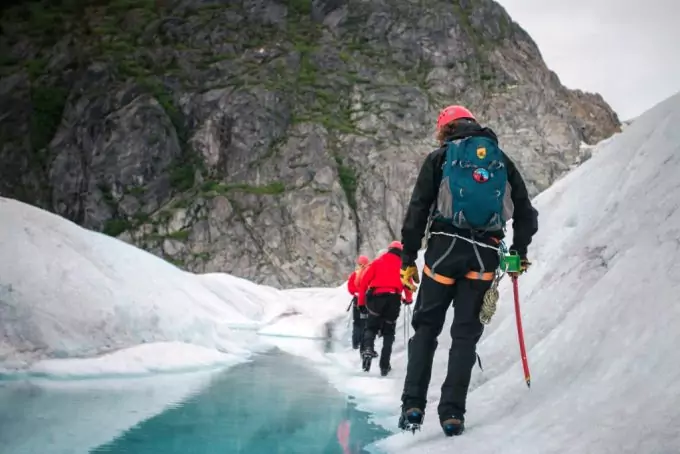
The three pieces of equipment include:
Shovel: You can use the shovel to prepare a camping area, to help in building an igloo, or for digging up fresh snow to melt for a water source.
Transceiver: This is a beacon that will send a signal to satellites with your location. The equipment will also notify nearby rescue teams of the signal and your position. The transceiver has to be carried as recommended by the beacon’s manufacturer: Usually they user will strap the device to one’s waist or on the shoulder and the unit is underneath the outermost layers of clothing. You do not want to store the unit in a backpack just in case you and the unit get separated in an avalanche. Beacons are available with an array of features including:
- A choice between an analog and digital transceiver
- Display screen
- Acoustic reinforcement: Gives guidance via acoustic search in addition to a display
Probe: A probe features depth markings so you can poke it through the snow to figure out how deep the snow is: This is helpful when searching for people following an avalanche. The pole is foldable so it will fit into your bag with ease.
In conclusion
Exploring the wilderness and hiking trails after a fresh snowfall is a moment in time that will allow you to capture some of the most unforgettable memories. Before you begin your outdoor adventure, take your winter backpacking gear list and use it as a checklist to make sure you have all the items you need for your trip in the bag.
[the_ad_placement id=”in-text-3-type-a”]Store your list so you can use it again for future trips where you are backpacking and preparing for your trips. Laminate the list or put it on a plastic sheet to preserve it. Now you are ready to enjoy your time exploring the snow-covered wintry wilderness.
You can step out into the wilderness and wintry landscape secure in knowing you are, without a doubt, ready for whatever lies ahead, and you have put together all the supplies you might need to make your trip enjoyable, safe, and secure.
Check out our article on winter safety tips to keep you protected from the harsh cold.

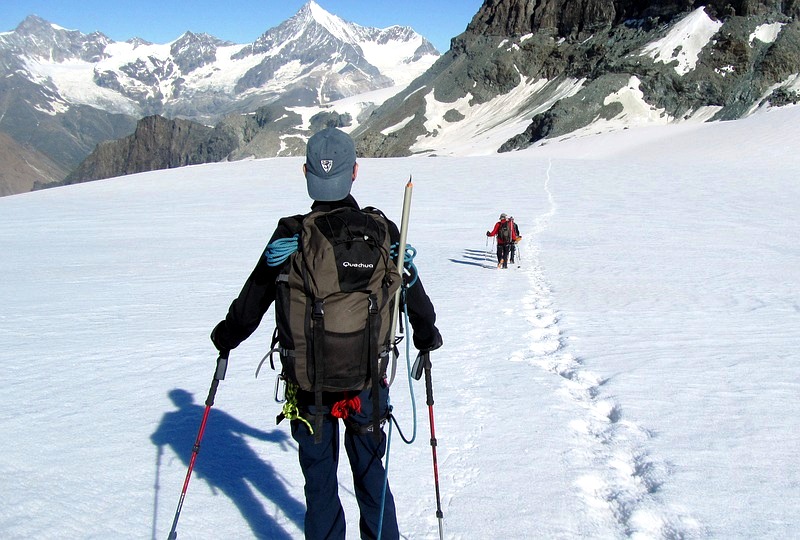

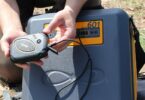
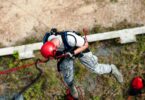
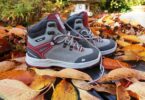
Winter backpacking is a beautiful experience, nobody should ruin it by not being prepared. I also want to add the importance of nutrition; it is nice to have hot food in the Winter like oatmeal. Of course, you want to keep your body warm but stay away from alcohol; cocoa and hot chocolate seems to be wise choices to drink at night.
Enjoying a wintry landscape is certainly a worthy experience, but
backpacking in the snow and cold weather conditions requires careful
planning and nutrition is an important factor.
Raise your hands if you had forgotten to bring their winter jackets while snowy hiking! Haha.
That’s the main reason why we have backpacks; to secure our basic needs. I have my light winter jacket always with me It is insulated, yet light-weight and breathable. It fits well on my backpack.
Hi Edward,
We all have that kind of experience and taking note of what we should bring and checking them off a list is beneficial when hiking.
Samuel